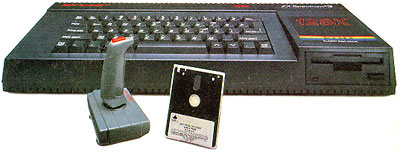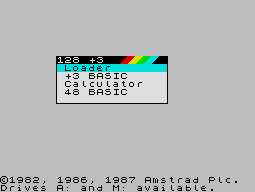|

Amstrad's
final Sinclair product, released at the same time
as the unsuccessful PC200,
was the Spectrum +3 (above). It was easily
the best-looking and most advanced Spectrum, boasting
a proper floppy disk drive, a new ROM and a parallel
printer port. The circuit design is radically
different to that of any other Spectrum and has
far fewer chips on the board. Like its predecessor,
the +3 was sold in "Action Packs" with
light guns and games included.
 However,
it was not as successful as the Spectrum
+2 and had a number of serious flaws.
The new ROMs were incompatible with a lot of old
Spectrum software; the disk drive used Amstrad's
own peculiar 3-inch format, the disks for which
hold only about 350K and cost up to five times
more than their 3.5-inch equivalents (that is,
when you could find them - not easy nowadays);
the machine cost an absurd £250 at a time
when the far more advanced Atari ST 520 and Commodore
Amiga 500 sold for only £400; and, most
importantly, the 8-bit market was beginning to
collapse as the 16-bit machines took over. Had
the +3 been launched a couple of years earlier
with a standard 3.5-inch drive, it might have
made greater headway against the ST and Amiga. However,
it was not as successful as the Spectrum
+2 and had a number of serious flaws.
The new ROMs were incompatible with a lot of old
Spectrum software; the disk drive used Amstrad's
own peculiar 3-inch format, the disks for which
hold only about 350K and cost up to five times
more than their 3.5-inch equivalents (that is,
when you could find them - not easy nowadays);
the machine cost an absurd £250 at a time
when the far more advanced Atari ST 520 and Commodore
Amiga 500 sold for only £400; and, most
importantly, the 8-bit market was beginning to
collapse as the 16-bit machines took over. Had
the +3 been launched a couple of years earlier
with a standard 3.5-inch drive, it might have
made greater headway against the ST and Amiga.
The +3 made an
unannounced second appearance in the shape of
the Spectrum
+2A - essentially a +3 circuit board
in a black +2 case.

Back
to top
|